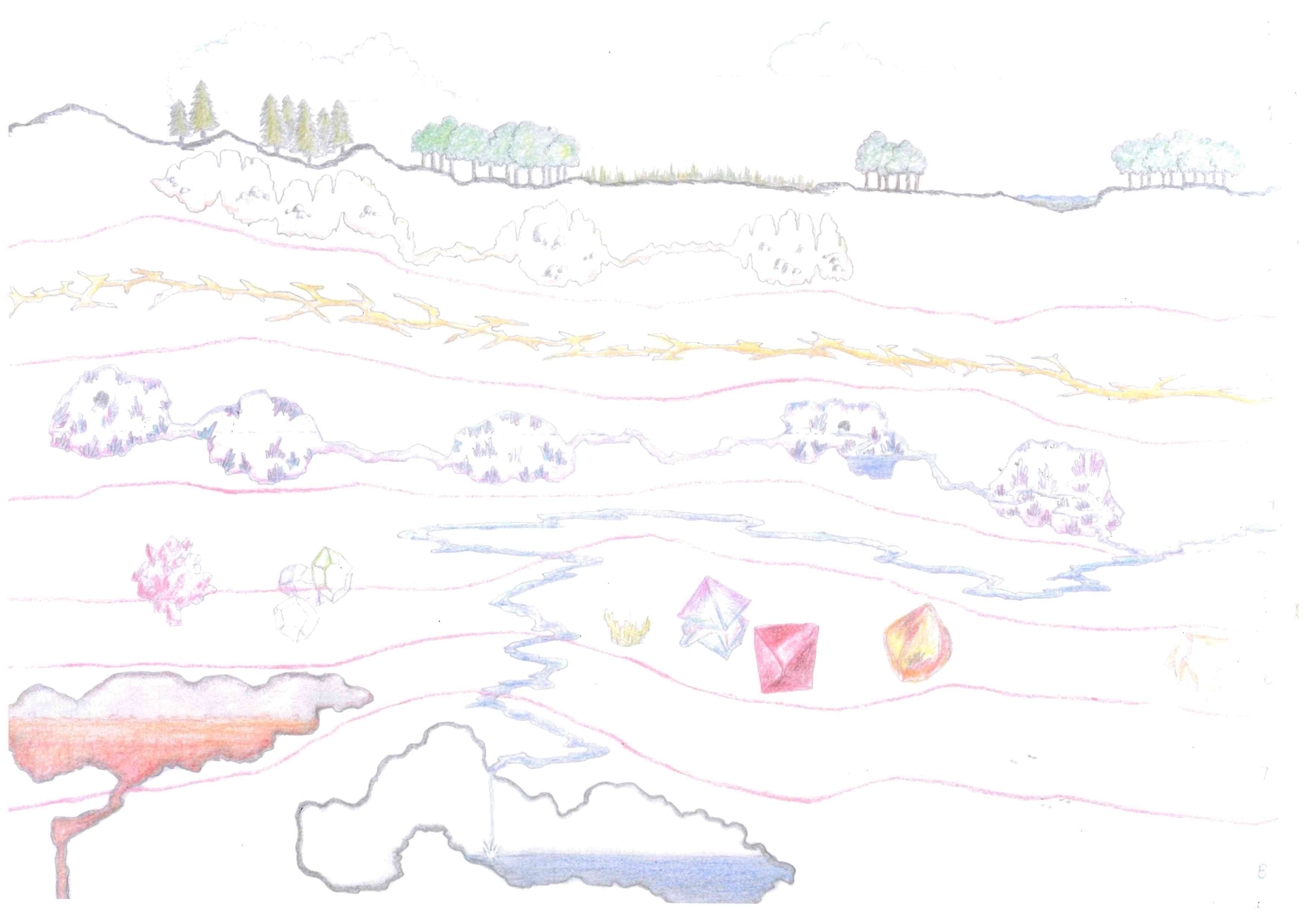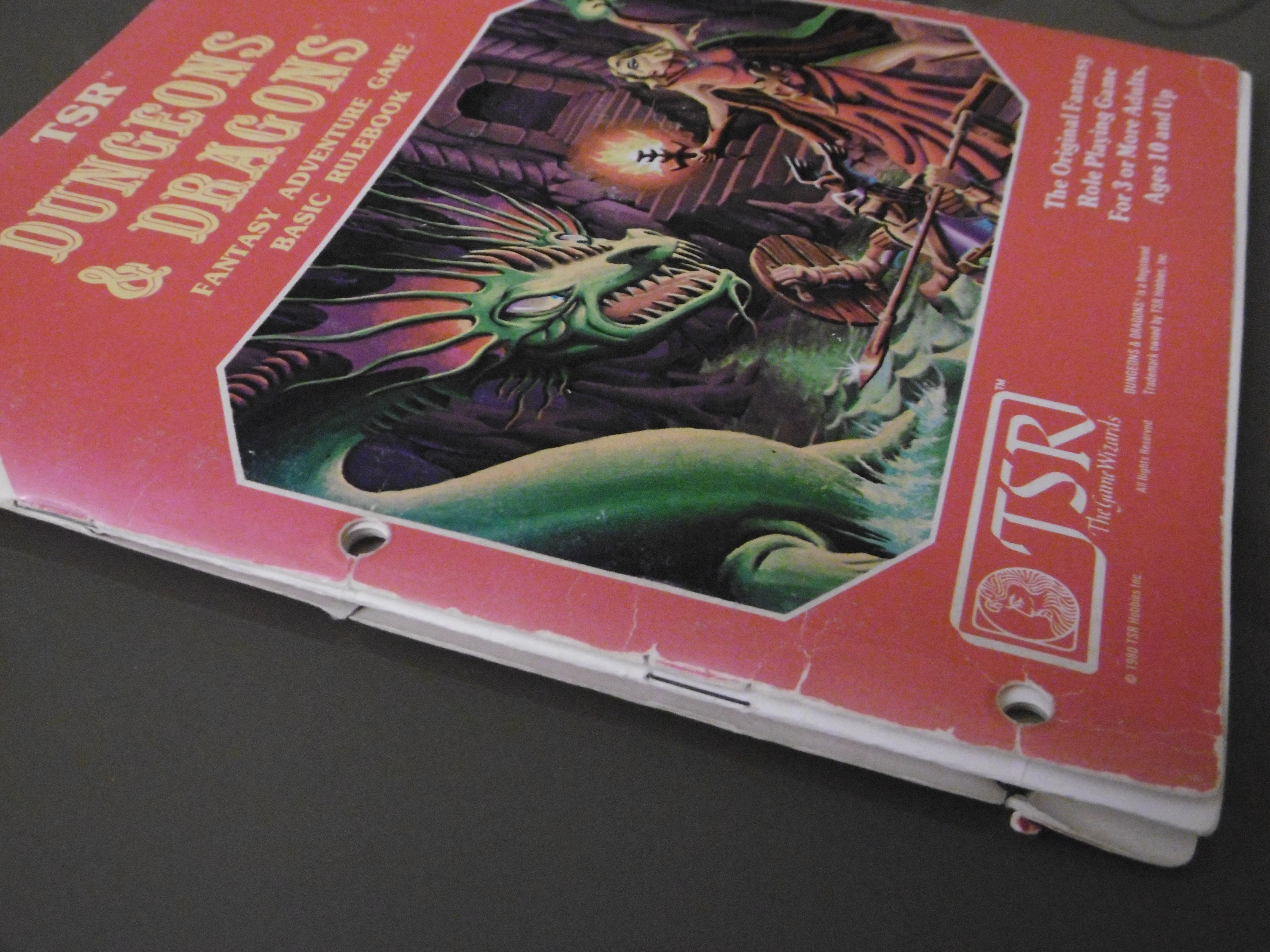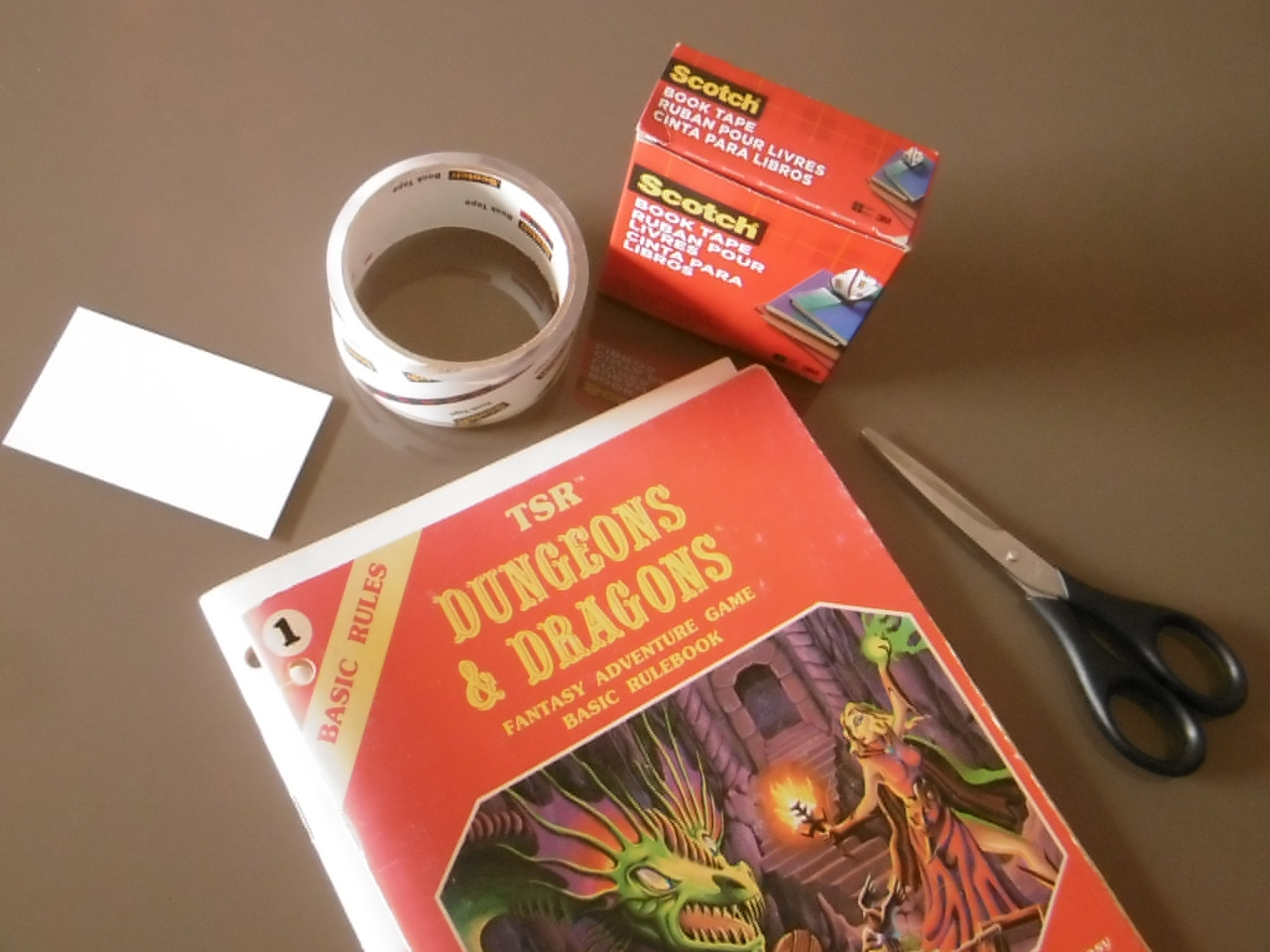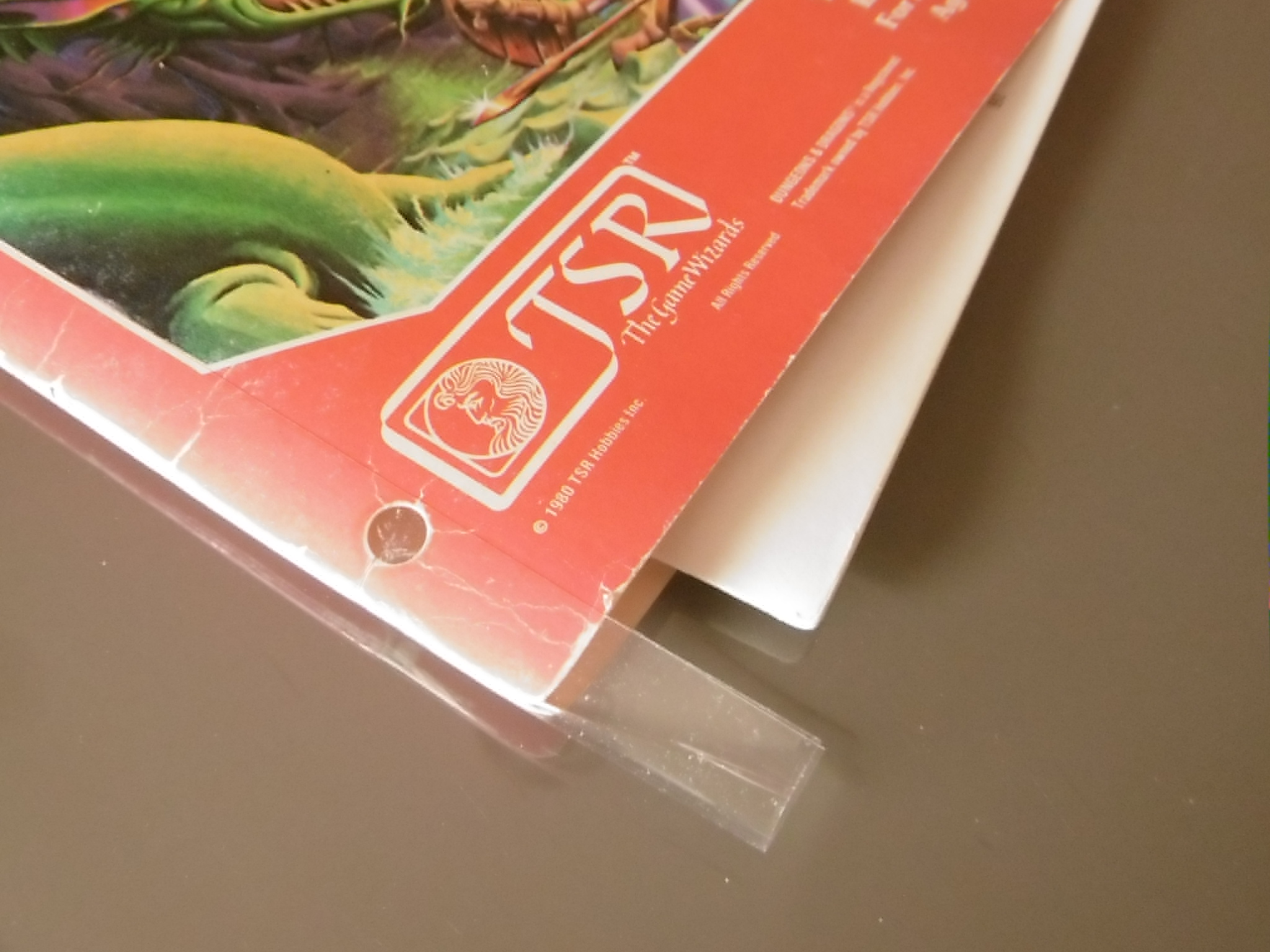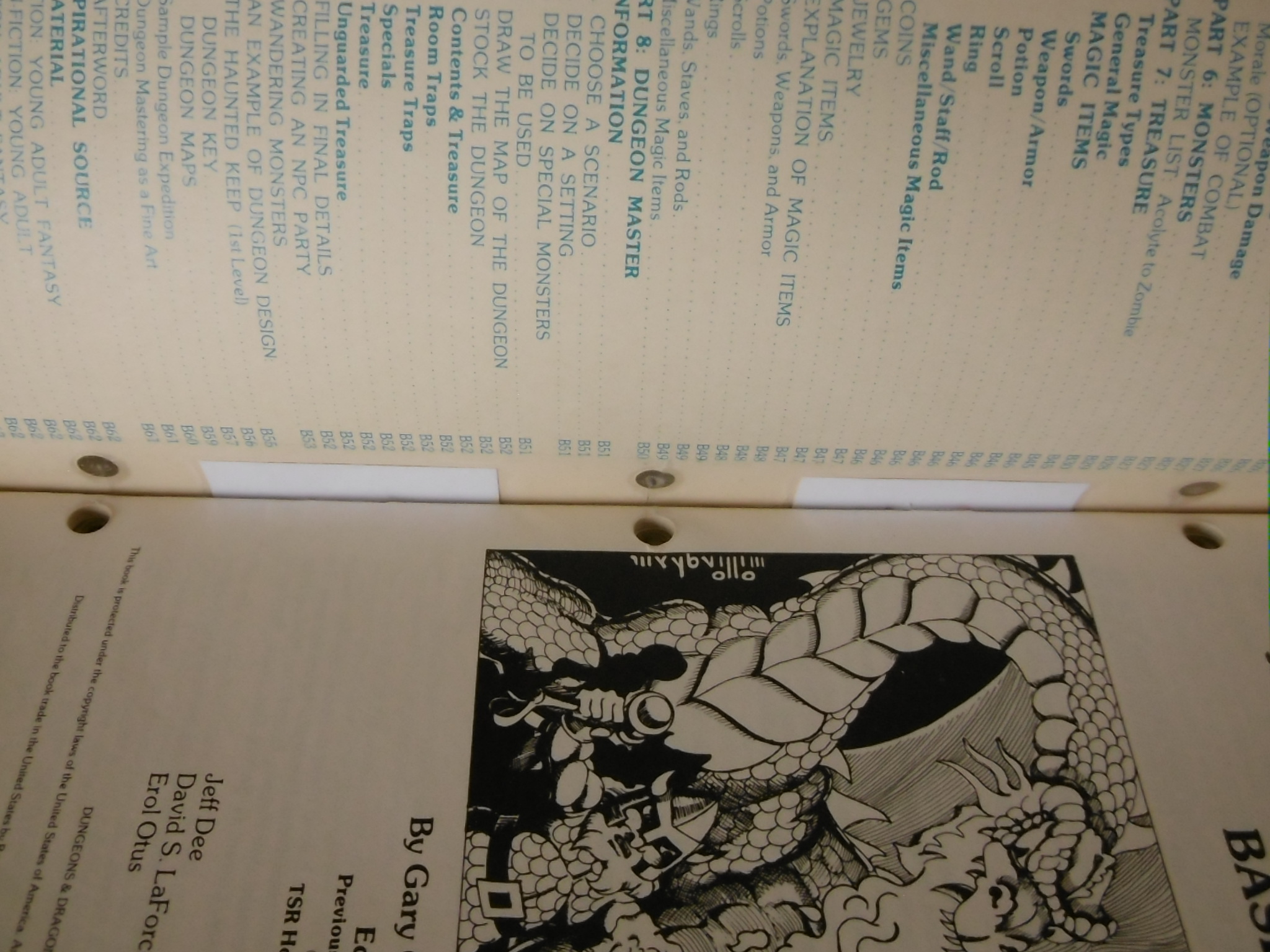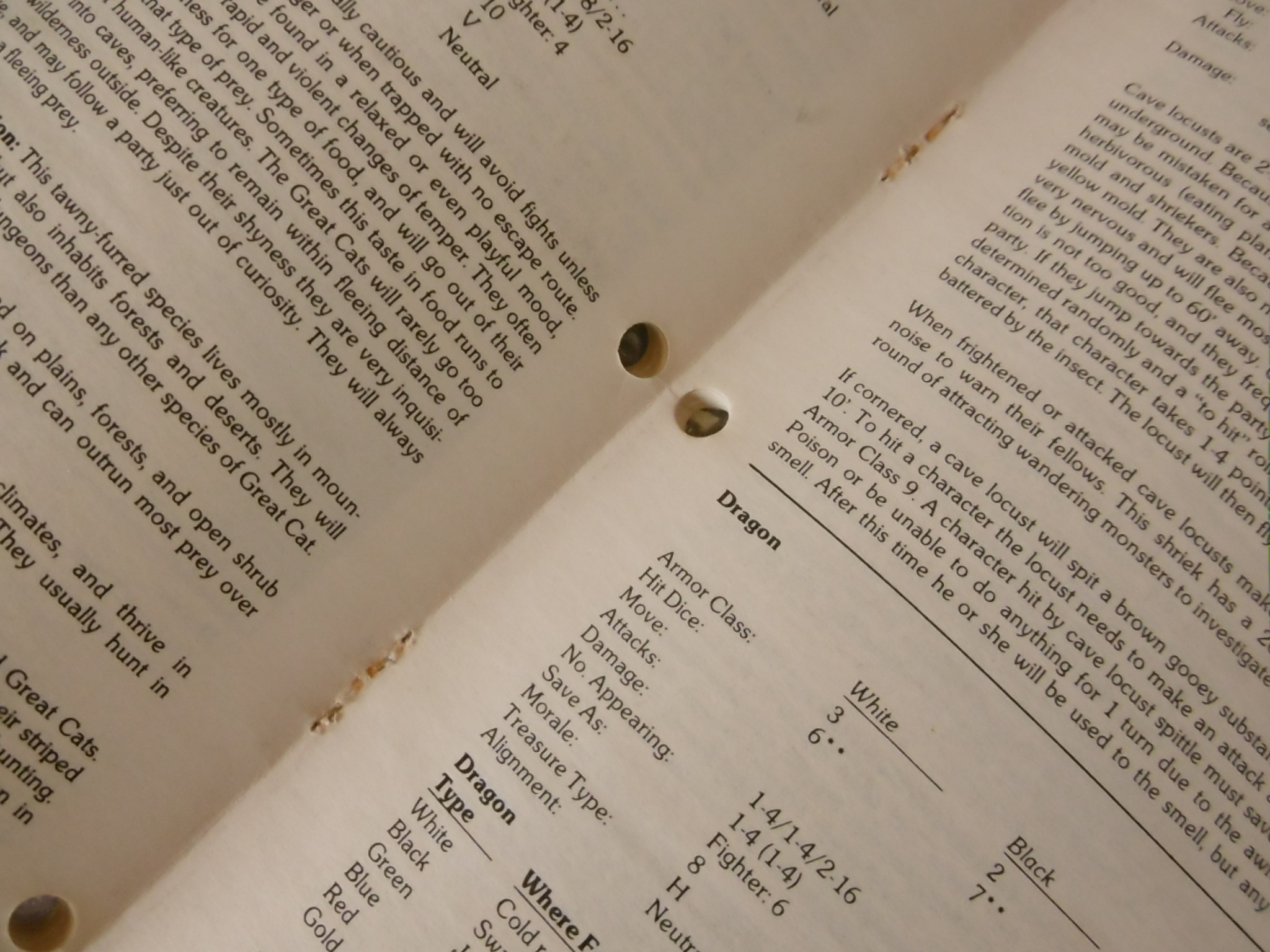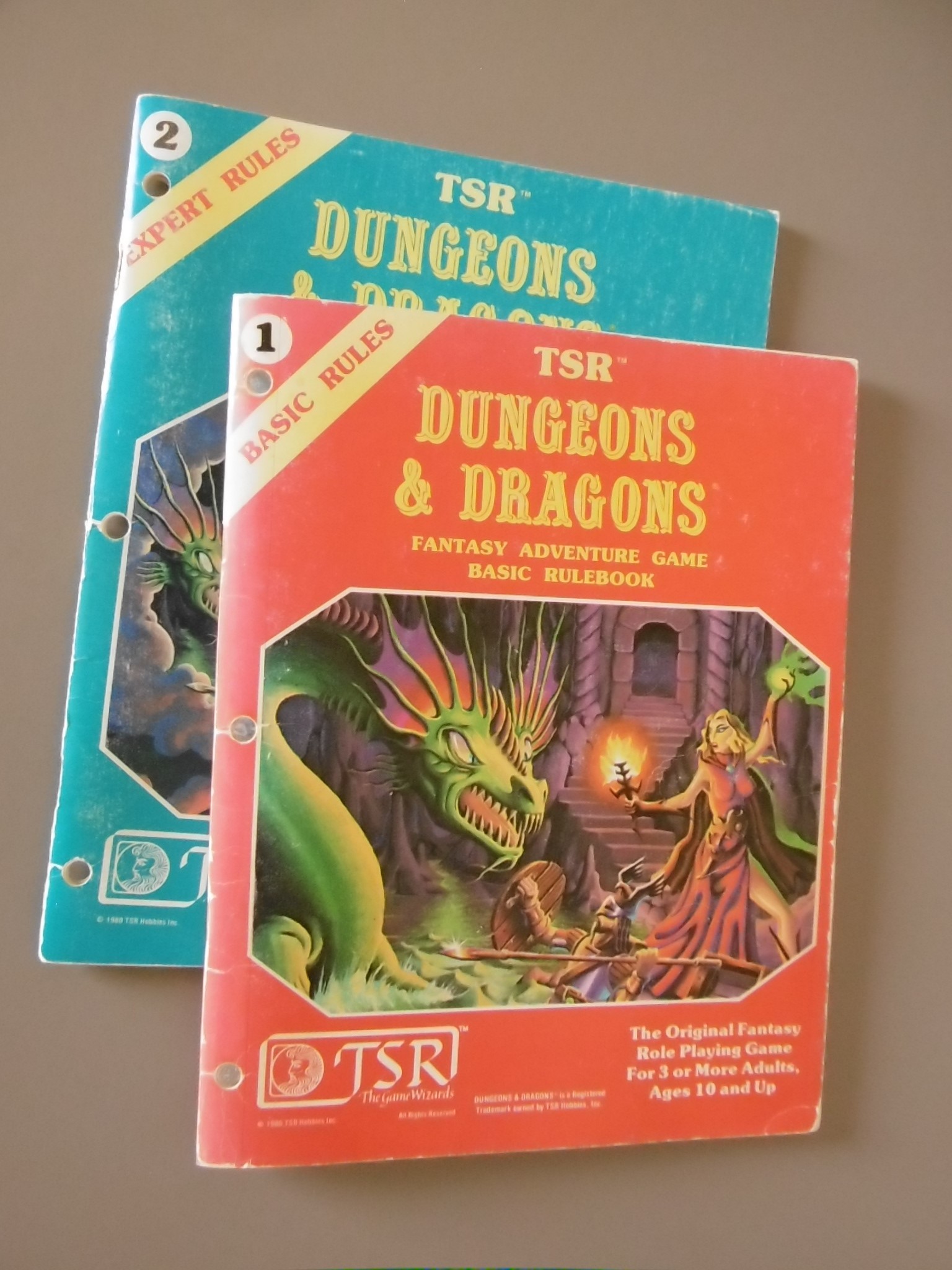Valormr and Environs
In preliminary form, this pencil sketch serves as the local area map for initial adventures in the Wyrmwyrd campaign. At lower character levels, most of our adventures will be in the dungeons. I save feature names, color, and maybe ink for future work.
As the campaign progresses, I will further elaborate the following text. I expect to borrow from Viggo Eskilsson, who must be writing a geography to accompany his Histories.1 For now I note only key points necessary to get the campaign started.
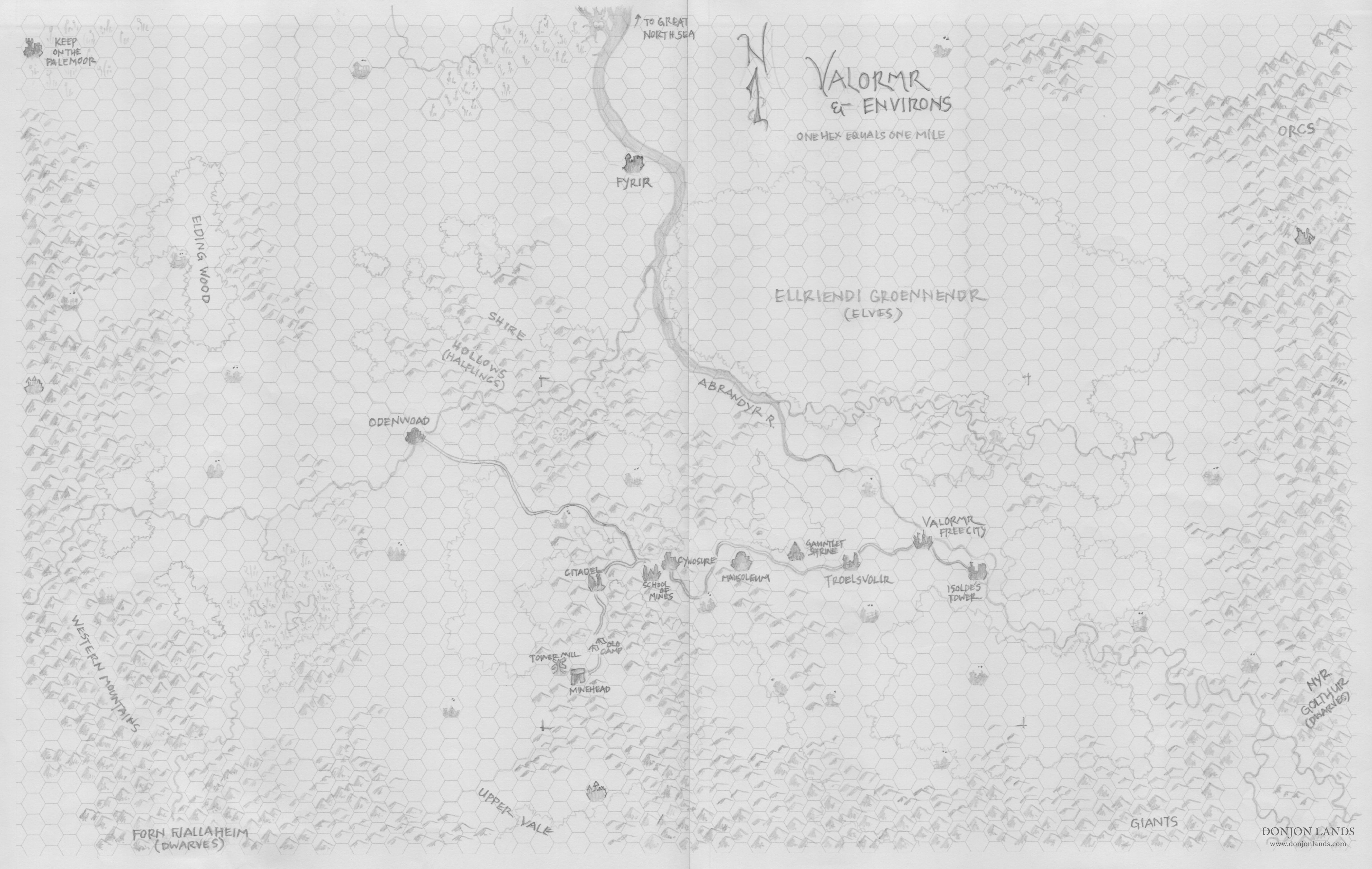
At 10 by 16 inches, the map may be printed on Tabloid size or A3 paper.
The scale being one mile to the hex, I use the large icons for map terrain (X62). The pencil’s lightness and my drawing skill render some icons difficult to differentiate. As a guide, the only city is Valormr, the only towns Troelsvollr and Odenwoad. Villages I mark with two dots in the hex. Smaller hamlets and thorps, only one. Castles and ruins are more heavily outlined.
The Valormr-Odenwoad road is shown, as is the road to the Citadel and Mine Head, which is in disrepair. Not shown are cart tracks between villages.
Dungeon Below
Right-angle markers (right and below center) frame a rectangle corresponding to the area above the Throrgrmir dungeon. See the Level 1: Surface map in “Dungeon Overhead by Strata”.
Valormr, Free City
- Population 12,000.
- Governed by a council of Lords, which elects each year one of their number to serve as Lord Mayor.
- Principle holdings include Odenwoad (west) and Fyrir (north).
- The domain of Valormr serves as a borderland between the Grand Duchy (off map) to the east and the fearsome lands of Darkmeer beyond the Western Mountains.
- The city trades up and down the river and with the Grand Duchy.
Abrandyr River
- Navigable south to Arvohne (city, off map).
- Empties into the Great North Sea at Skullhaven (former pirate hold, off map).
River Travel
From Valormr, riverboats travel upstream to Arvohne in three days and downstream to Skullhaven at the river’s mouth in two days. From Skullhaven east along the coast and up another river to the capital and major trade port of the Grand Duchy, four more days are required. Aboard a mercantile vessel, the journey takes from two to three times longer, allowing for stops at trading ports.
Troelsvollr
- Small town, population 1,500.
- Mostly in ruins since Stardark’s End.
- Hosts the Old City Bazaar.
Old City Bazaar
A frequent trading stop—often a destination—for law-abiding merchants and for those who can temporarily abide the law. Since the Red Ogre opened a tunnel from the dungeon below, monstrous races frequent the bazaar. A special detachment of the Valormr Guard patrols the stands, booths, and tents in force.
Odenwoad
- Small town, population 4,000.
- The High Castle of Odenwoad overlooks the town and river.
- From the High Castle, the Lord of Odenwoad governs the town and surrounding villages.
- Patrols range from the Shire Hollows to the Western Mountains,2 from Elding Wood to Upper Vale.2
Fyrir
- This fortress guards the domain against pirates.
- Also patrols north of the Shire Hollows and, across the river, north of Ellriendi.
Shire Hollows
- Total population two thousand halflings.3
- Numerous streams flow from rolling hills, through farms and woodlands.
- Divided into three shires: Arbenshire (also called North Shire), Black Pine Shire (east), and Gold Hollow (or South Shire).
PC Origins
As the campaign begins in the remote area northwest of Odenwoad, player characters of human classes hail from villages in that region. Demihumans come from one of their respective communities: halflings from the Shire Hollows, dwarves from Nyr Golthur or Forn Fjallaheim, and elves from Ellriendi.
Ellriendi Groennendr
- Elven population unknown.
- The elves defend the forest at all costs.
- Orcs from the mountains are a frequent threat.
- Only elves and elf friends are allowed to enter their territory.
- The forest today is a fraction of its size in ancient days.
- Deep within the forest, the elves guard a secret.
Players, Characters, and the Secret of Ellriendi
While an elven character may know Ellriendi’s secret, the player does not. Bound to silence, the character will not talk about it or answer any questions concerning the secret. The player, though ignorant, may run the elf as evasive, aloof, and enigmatic as desired.
Forn Fjallaheim
- During Throrgrmir’s decline, four dwarven clans migrated from the dungeon, each on separate occasions.
- Two clans returned to Fjallaheim, their mountain home.
- A third clan resettled elsewhere to an as-yet-undetermined location on the map.4
- From the fourth clan, we have no word since their departure southward.
Nyr Golthur
- At the fall of the Throrgrmir civilization, the five remaining clans emigrated to the mountains up the Abrandyr.
- They mine silver and dispute the river valley with giants.
- Refer to themselves still as Throrgrmir dwarves.
Pale Moor
- Between the Western Mountains and the Great North Sea, these lowlands are shrouded in mist and legend.
- Wise folk don’t go there. The foolhardy don’t return.
Notes
1 A geography in the style of Strabo’s Geographica but constrained to the local area.
2 The Western Mountains and Upper Vale are parenthetical names. That is, they are often referred to as such, but they also have proper names I haven’t learned yet.
3 I calculate 2 to 5 villages per shire (average 3.5) times three shires, which makes 10.5 villages. Per village, populations range from 30 to 300 (average 165). I round up from 1,732 (10.5 x 165) to 2,000.
4 We allow campaign events to determine the third dwarven clan’s present location.
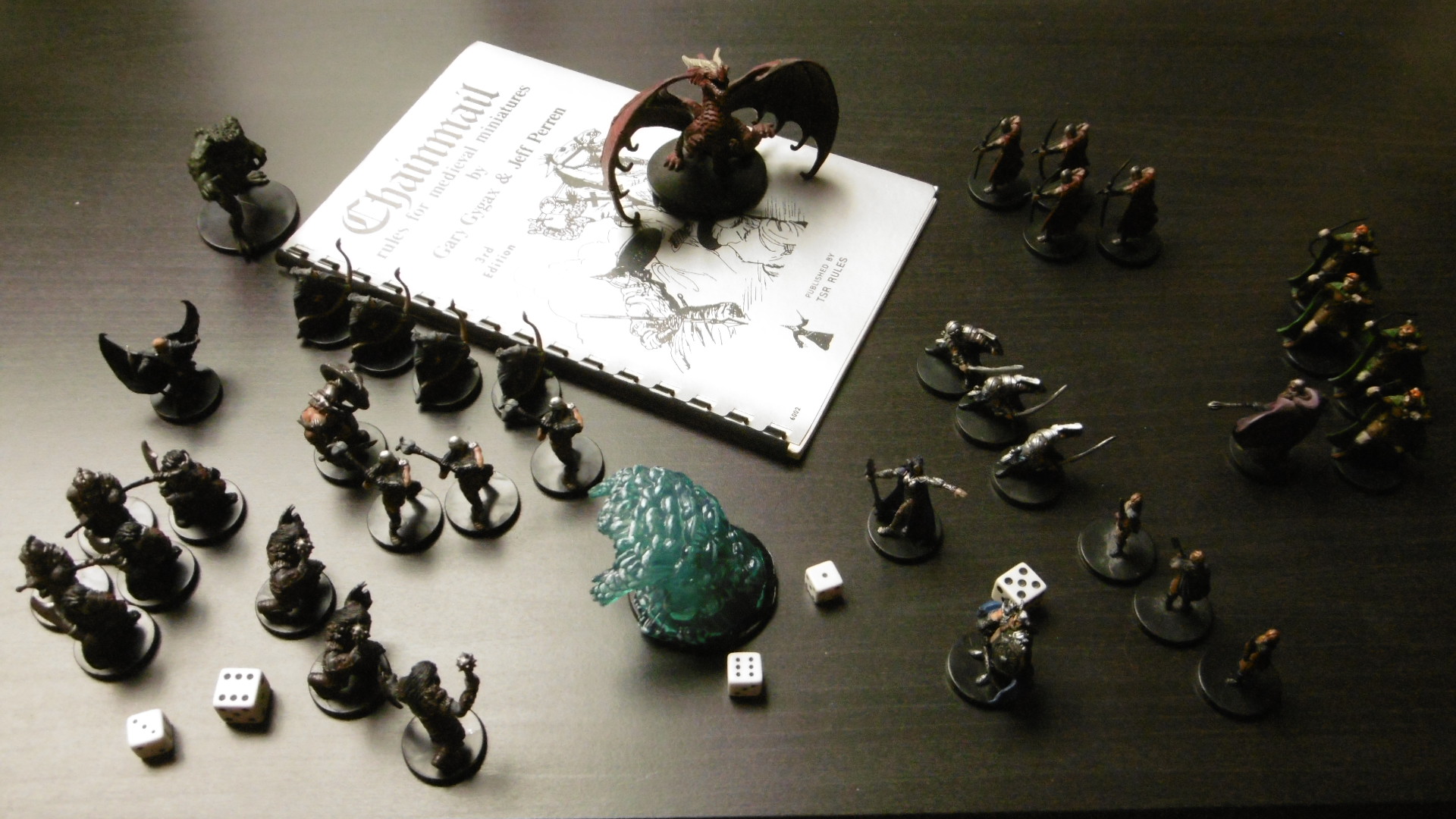
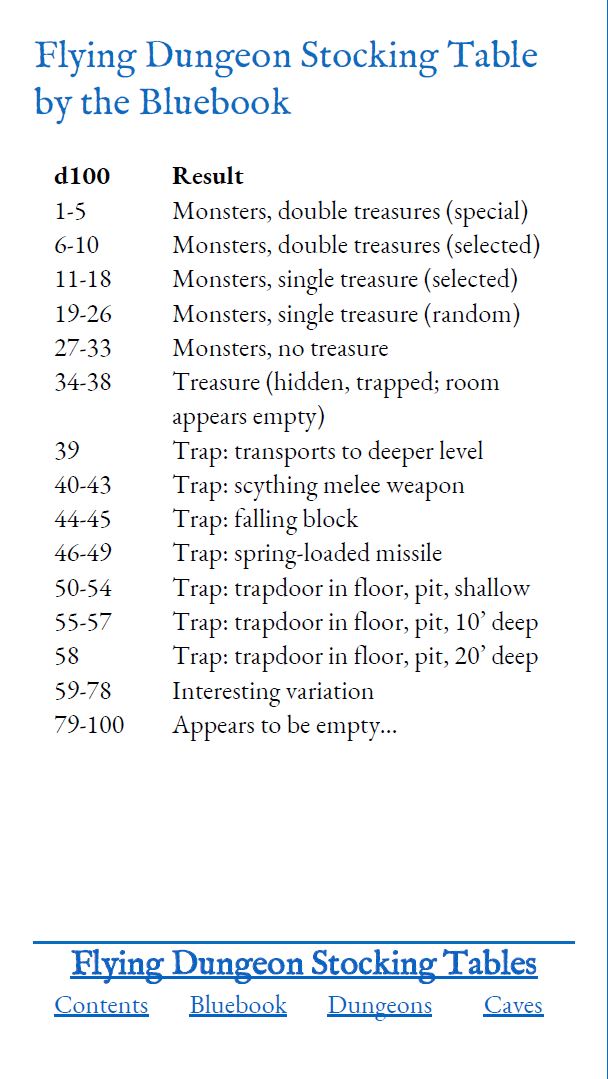
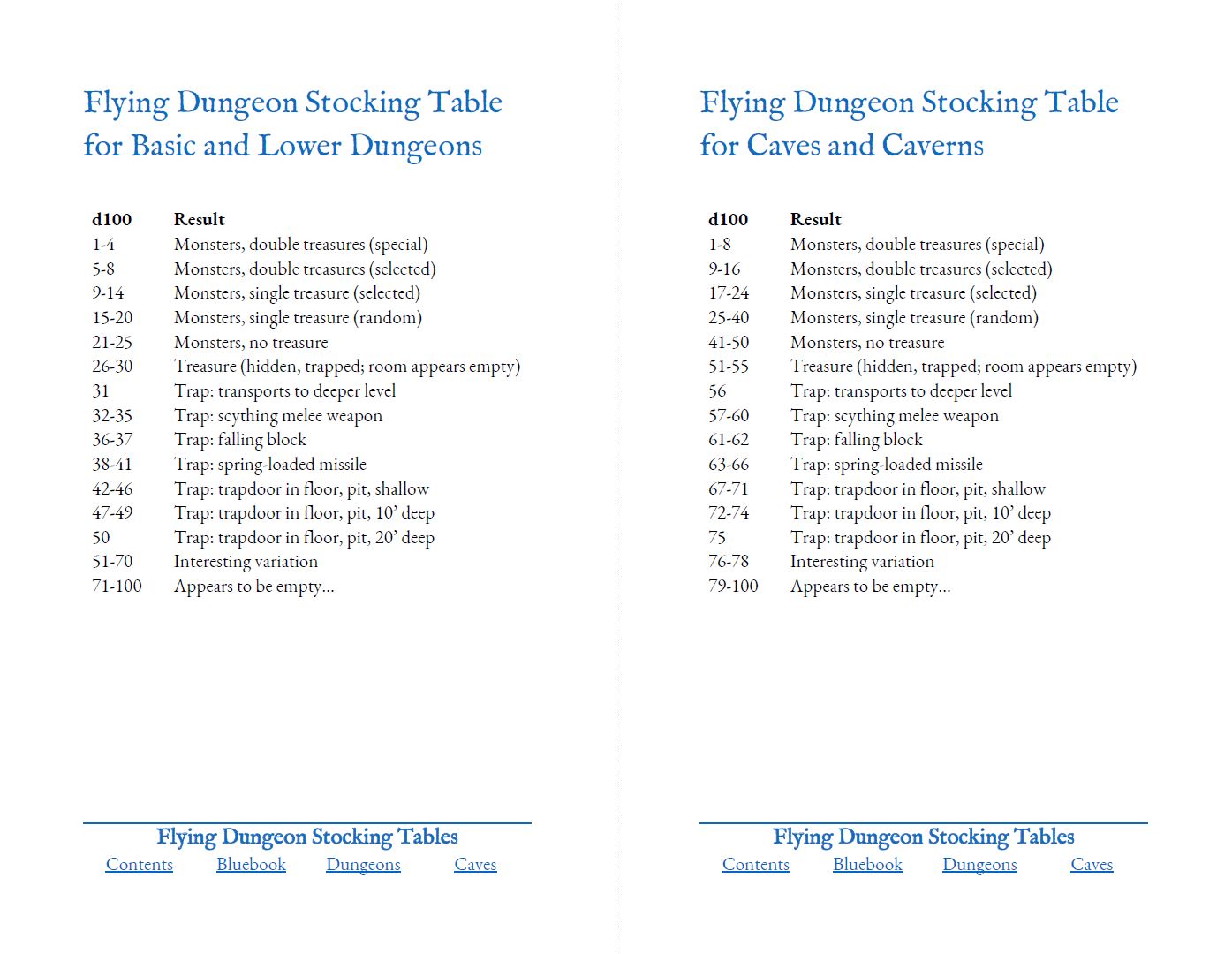
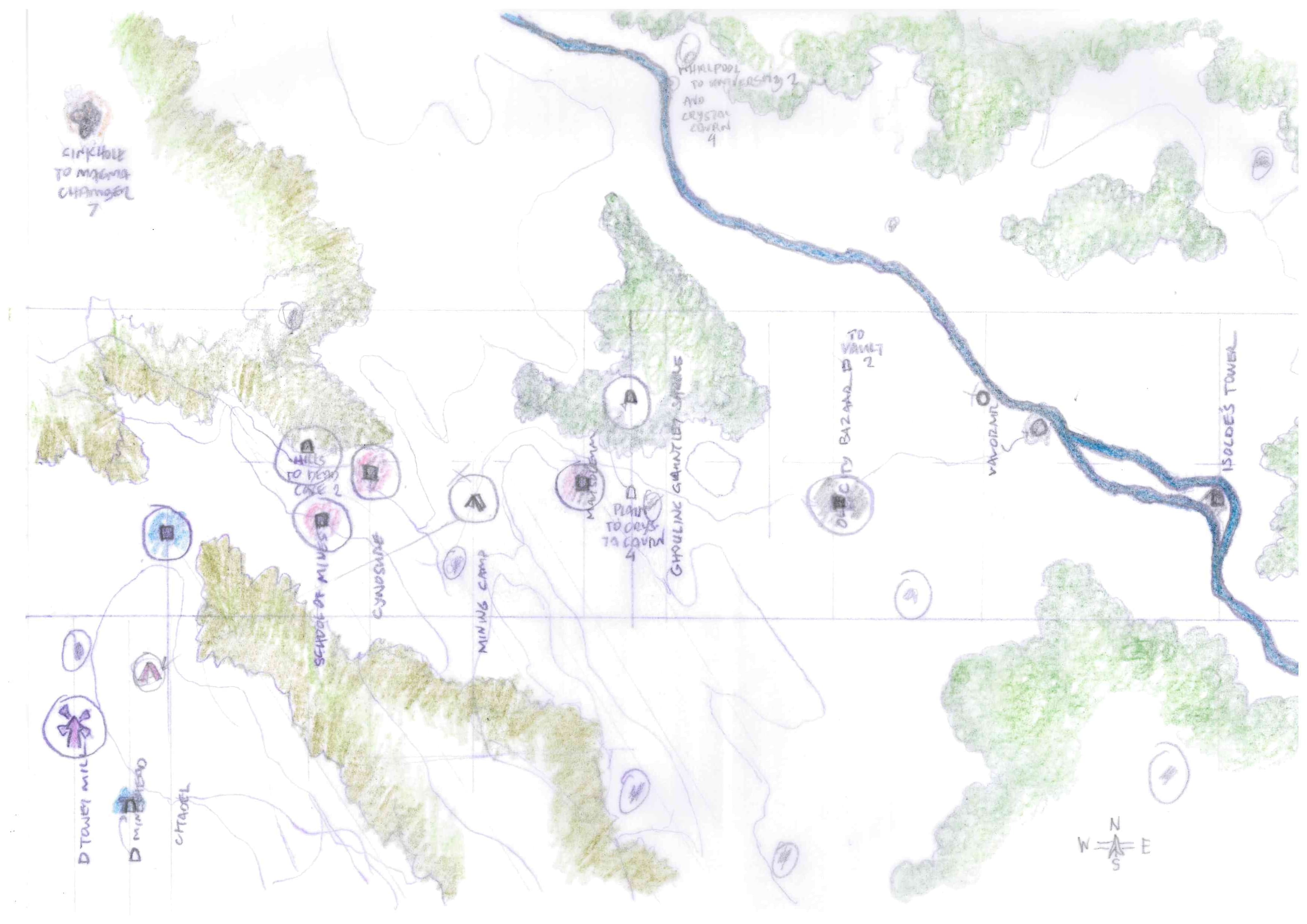
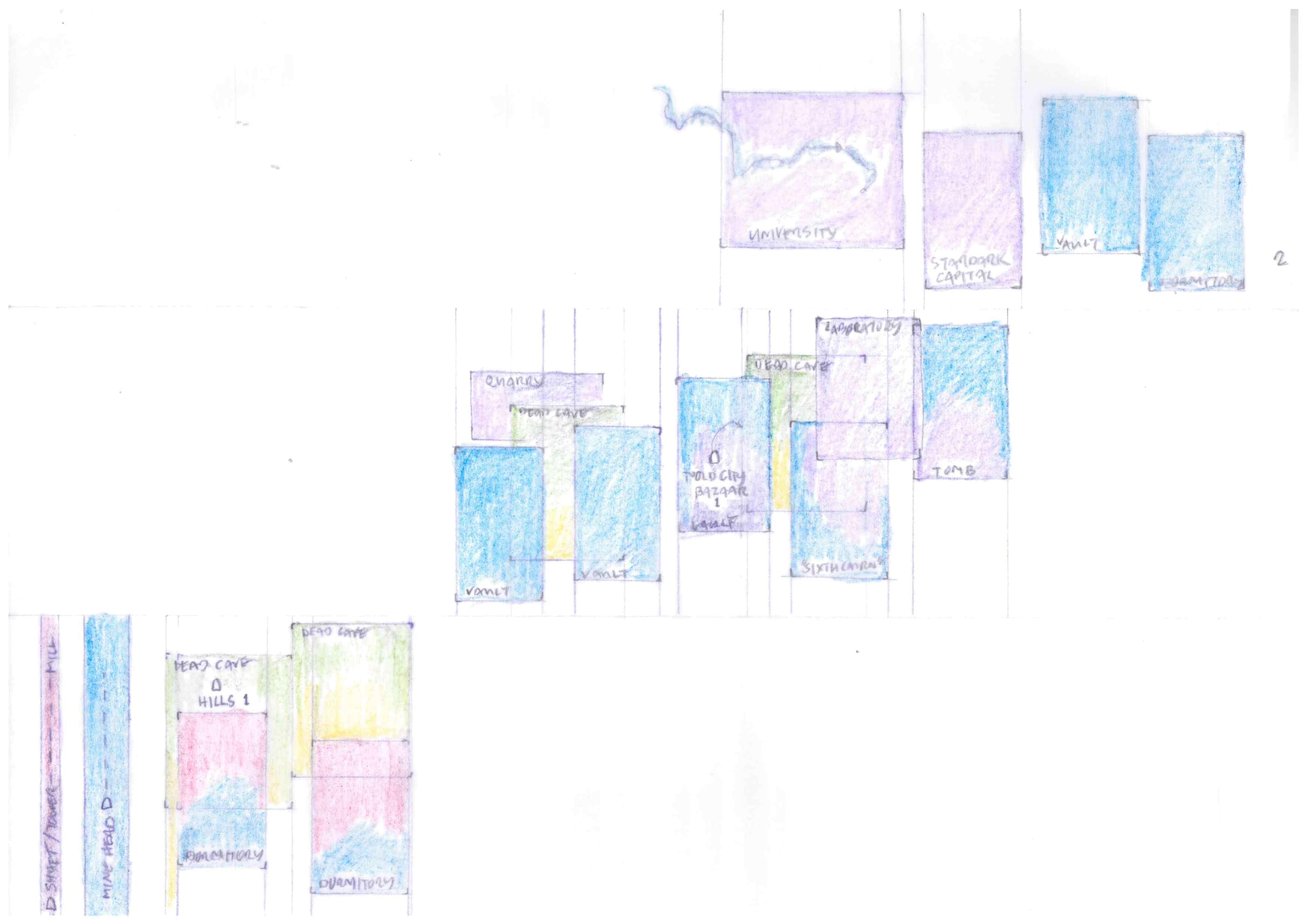
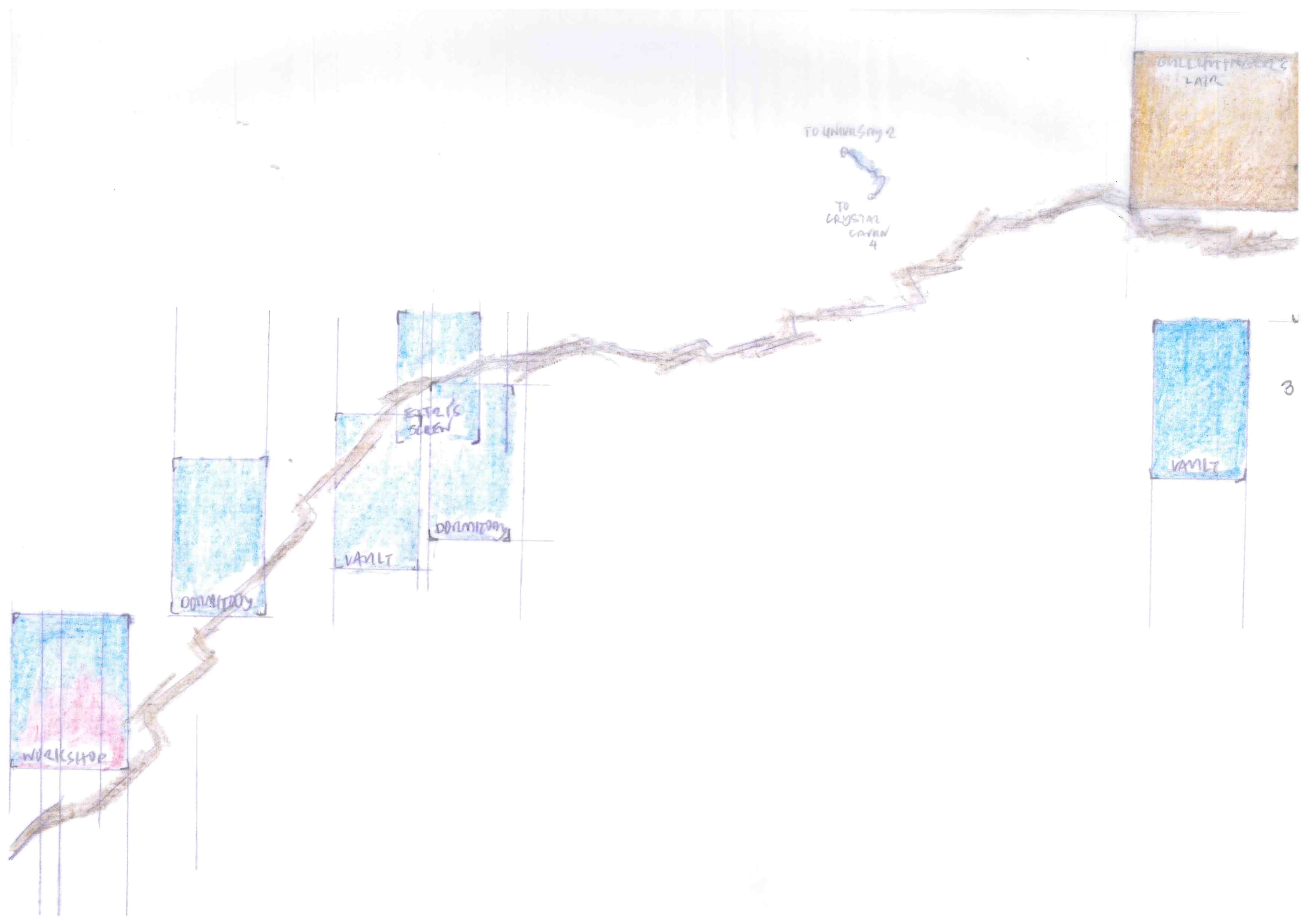
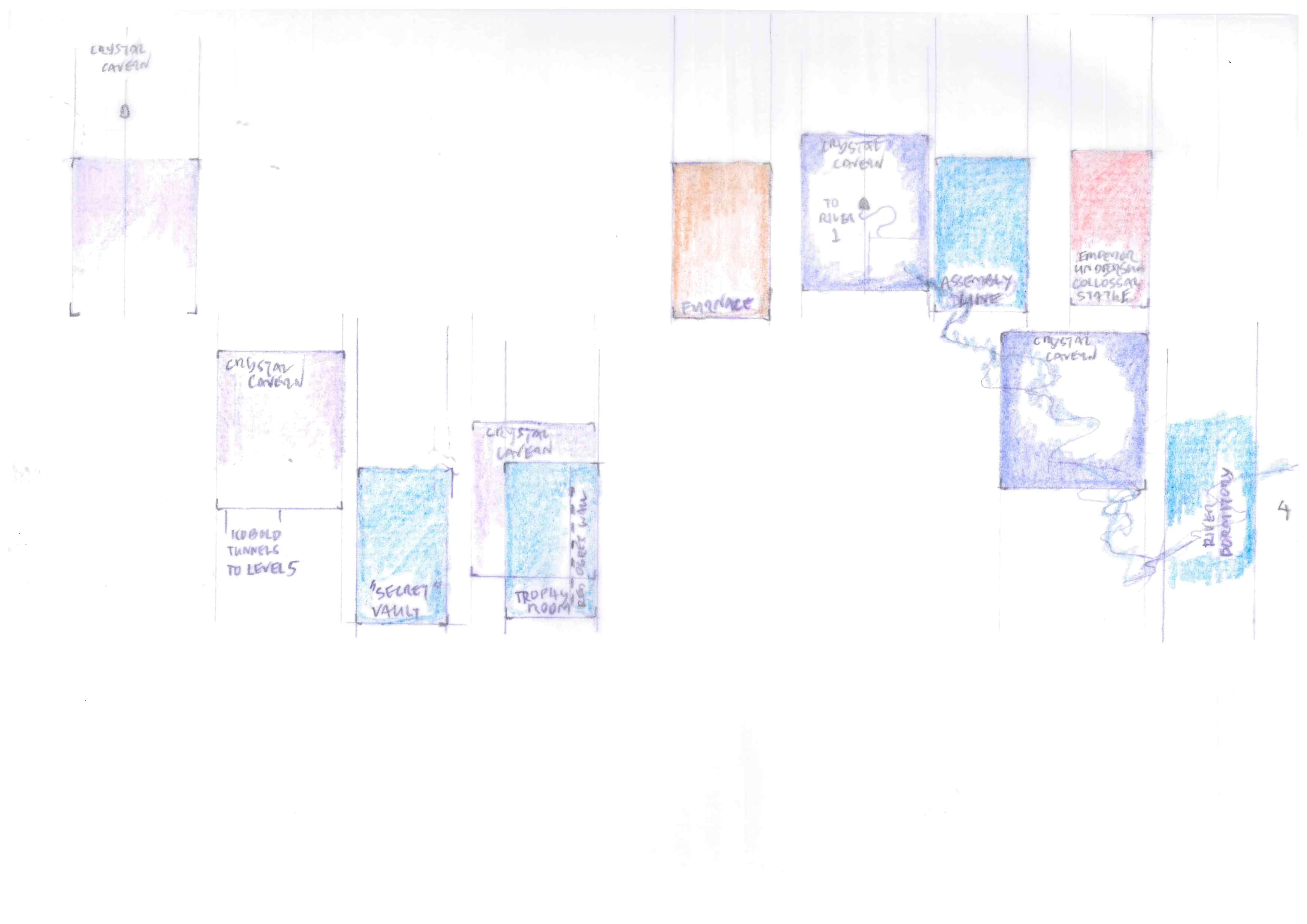
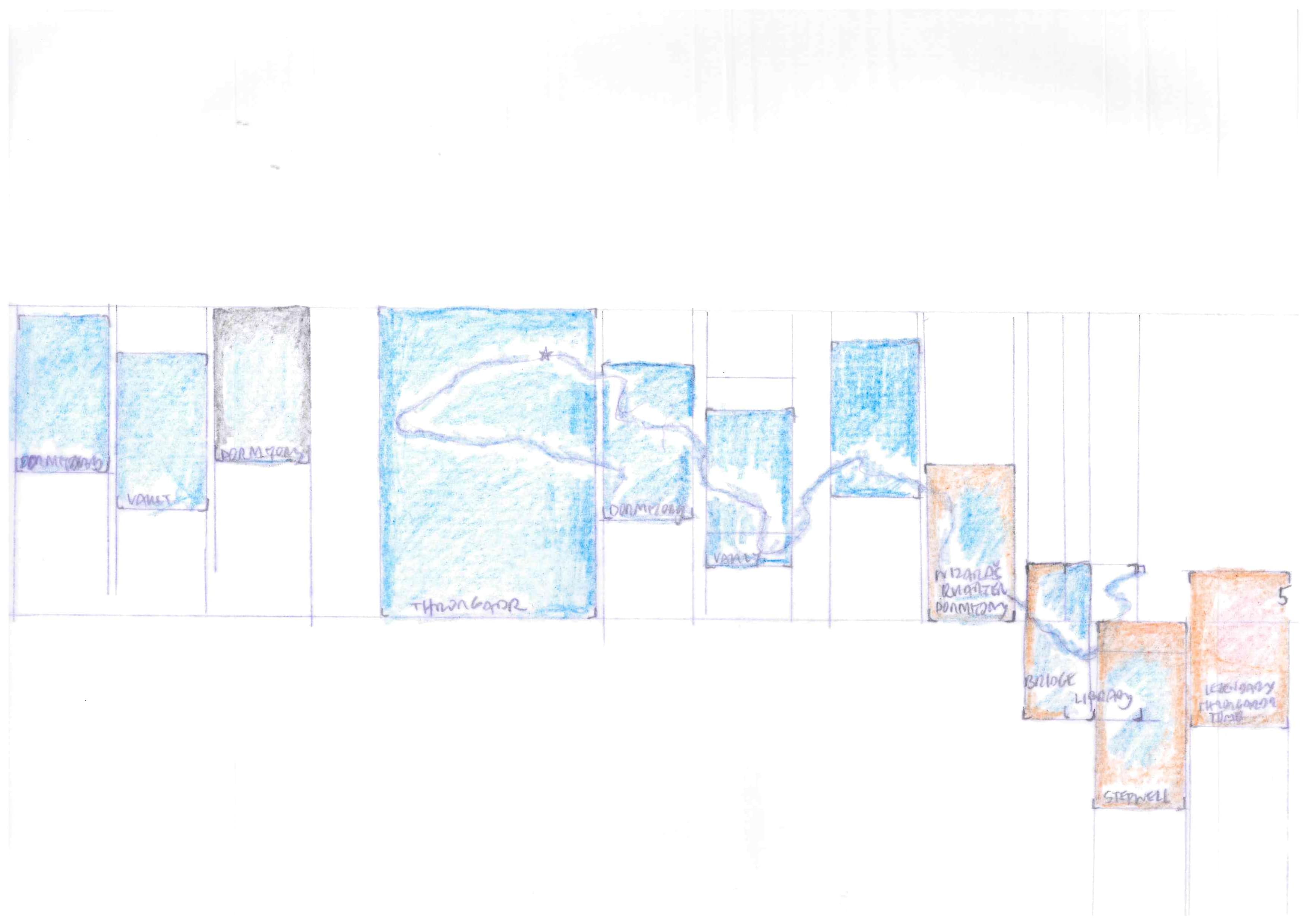
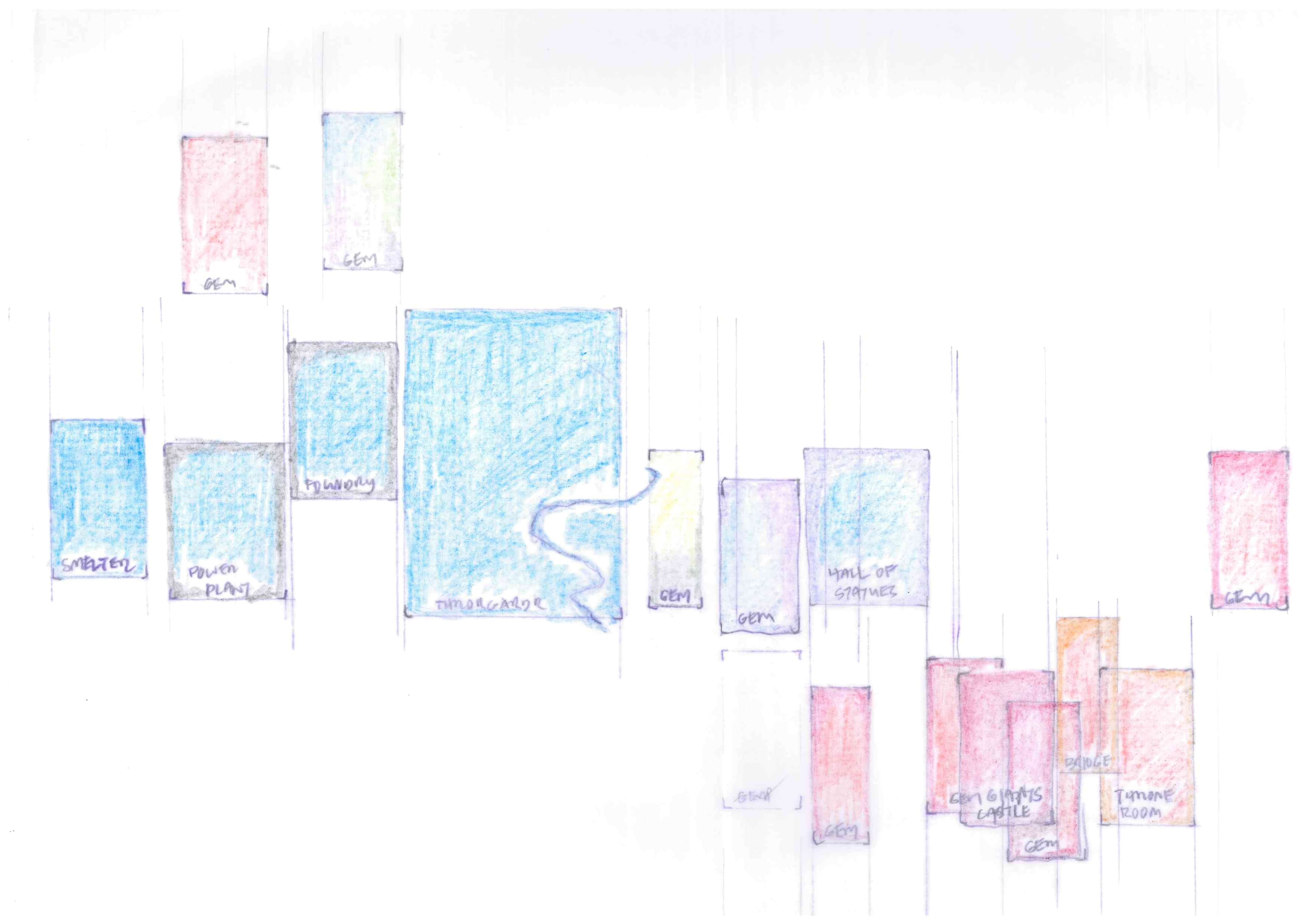
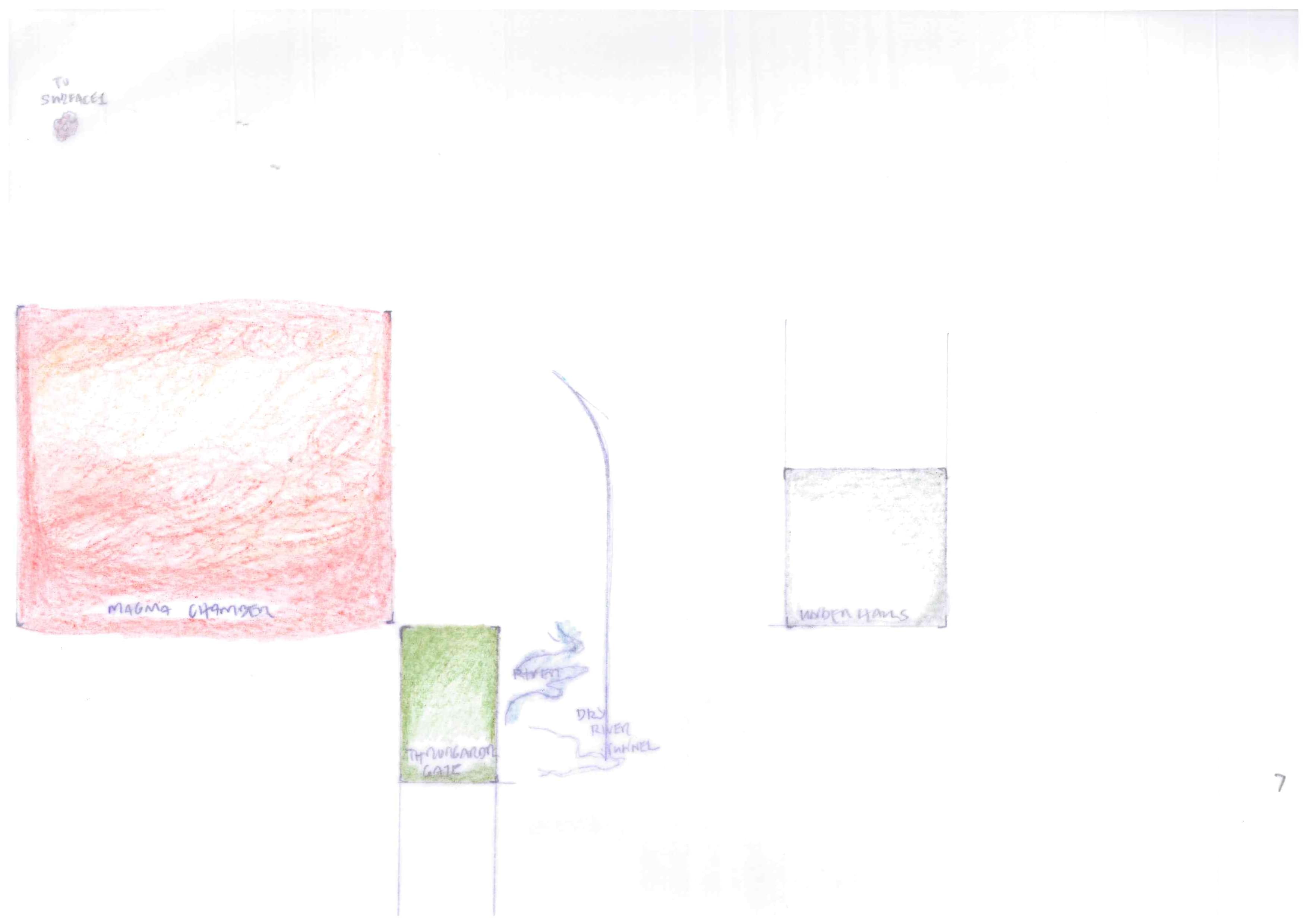
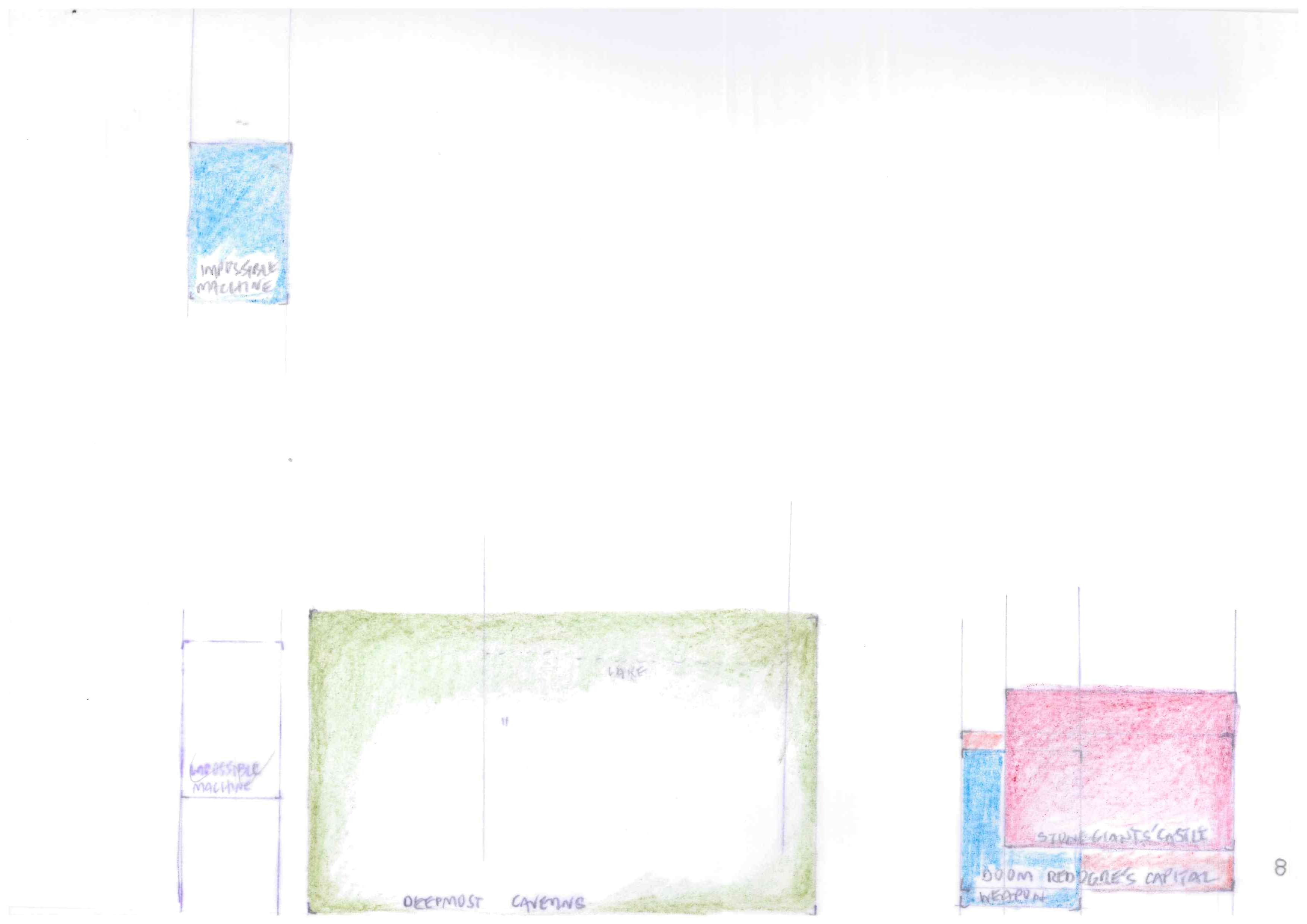
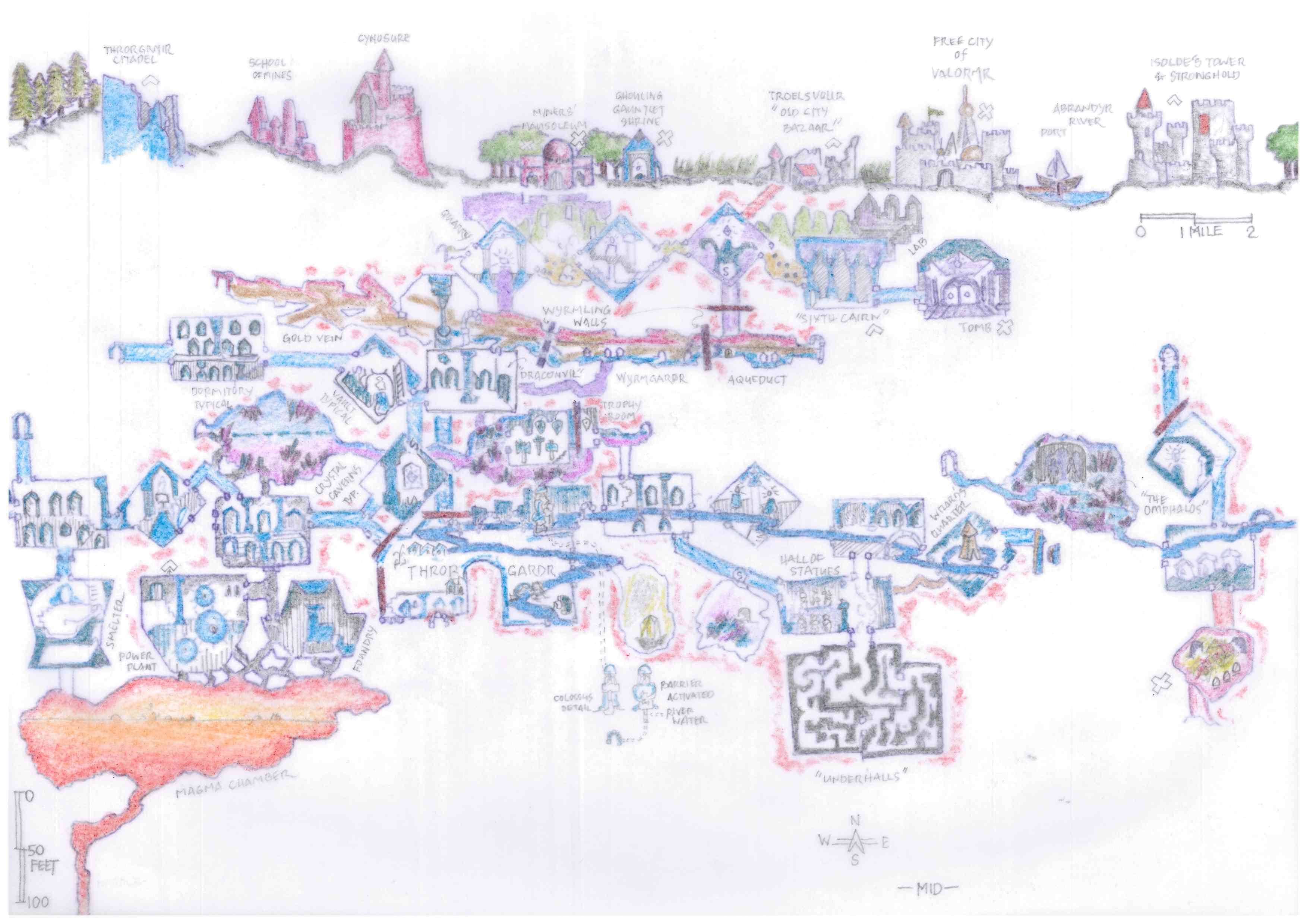
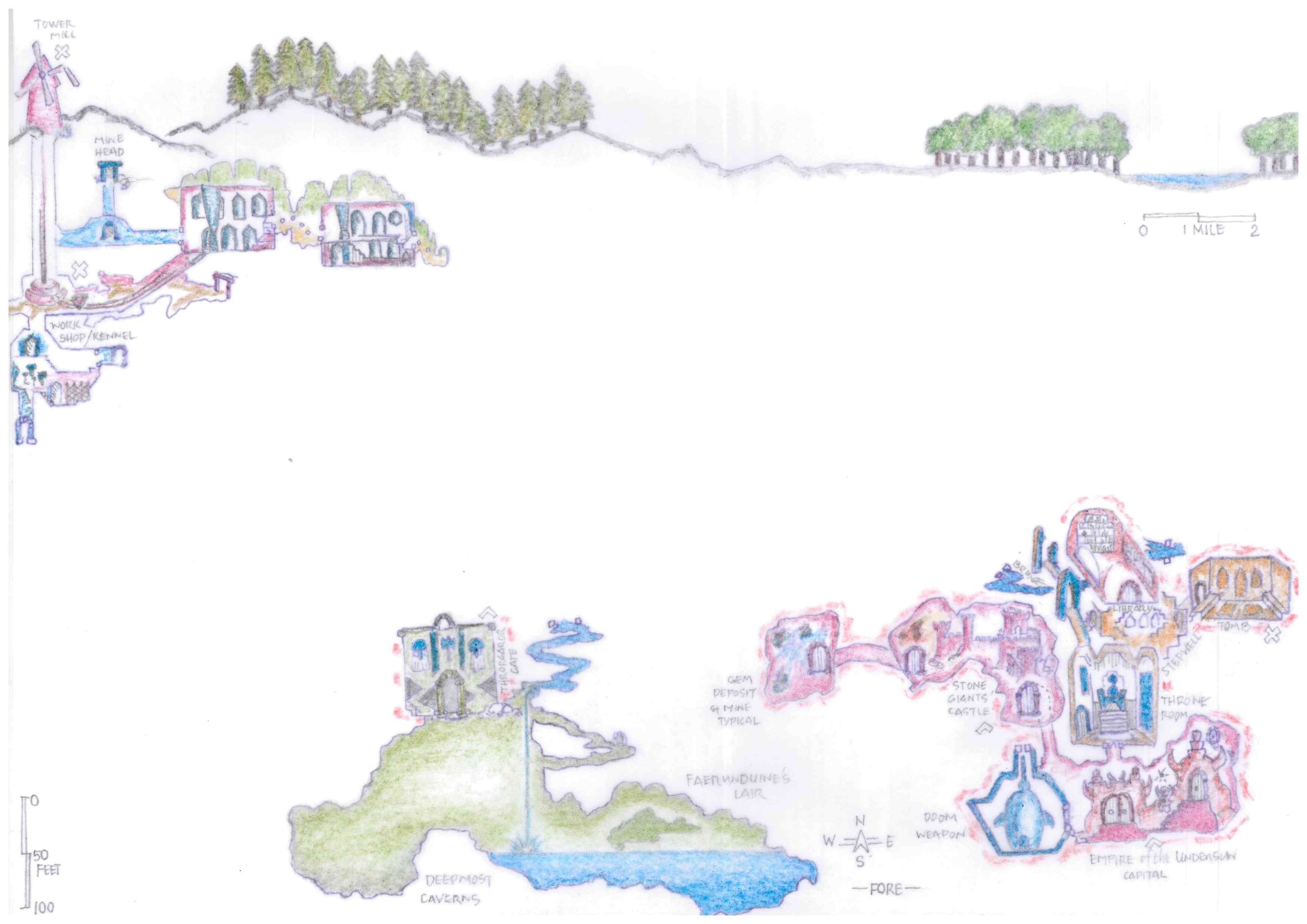
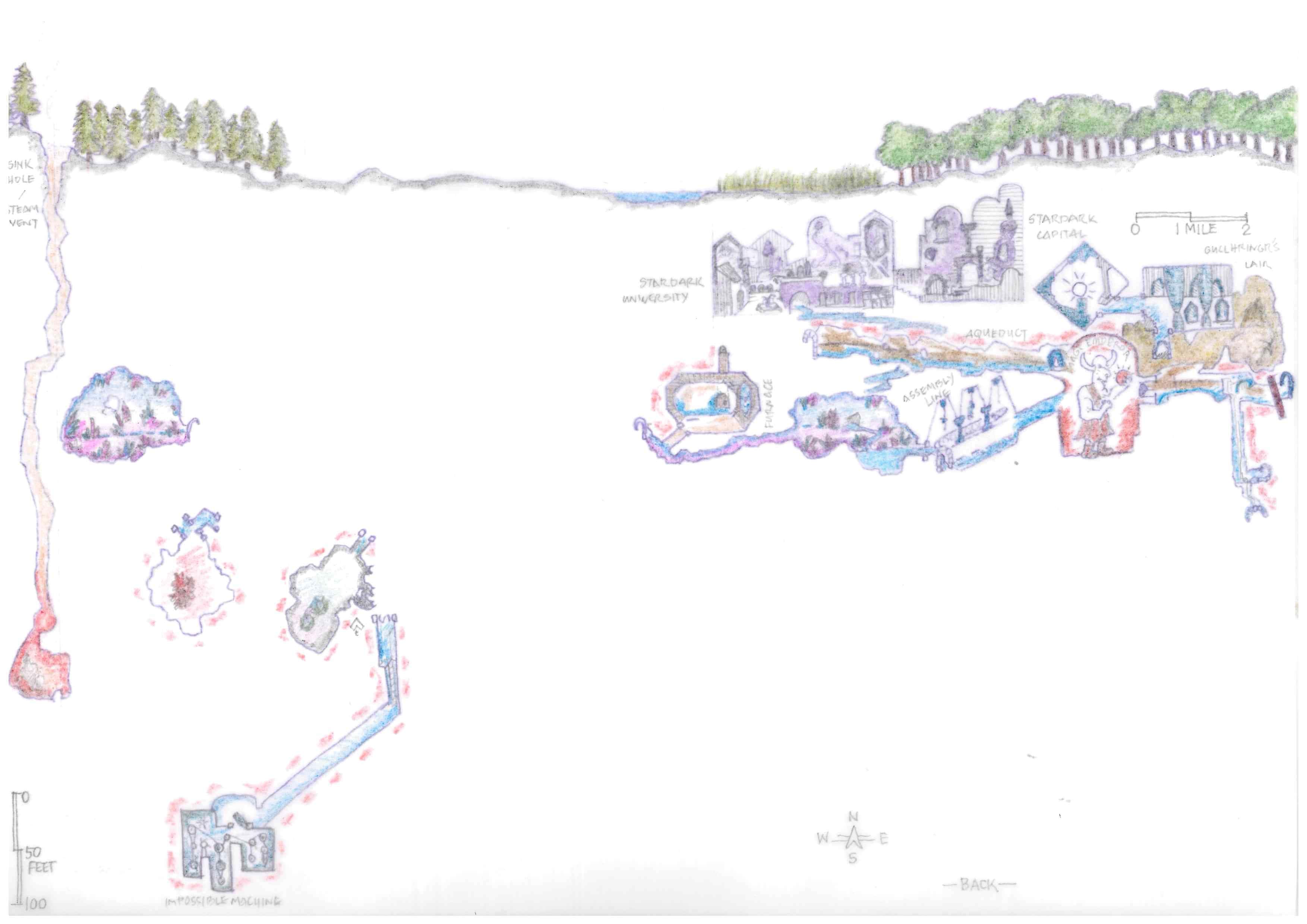
 Blue Wizard
Blue Wizard Faerunduine
Faerunduine Gullhringr
Gullhringr Kobolds
Kobolds Legendary Throrgardr
Legendary Throrgardr Magnate
Magnate Murtax
Murtax Red Ogre
Red Ogre Stardark
Stardark Stone Giants
Stone Giants Throrgrmir Dwarves
Throrgrmir Dwarves